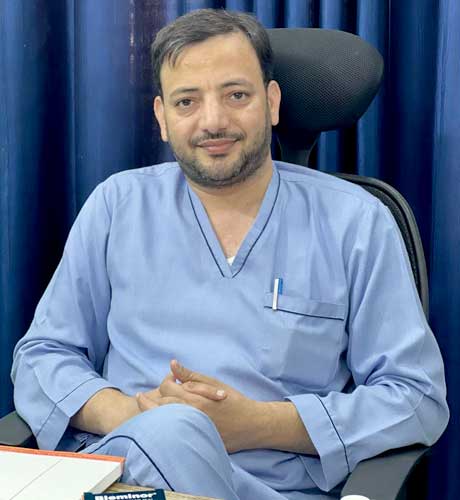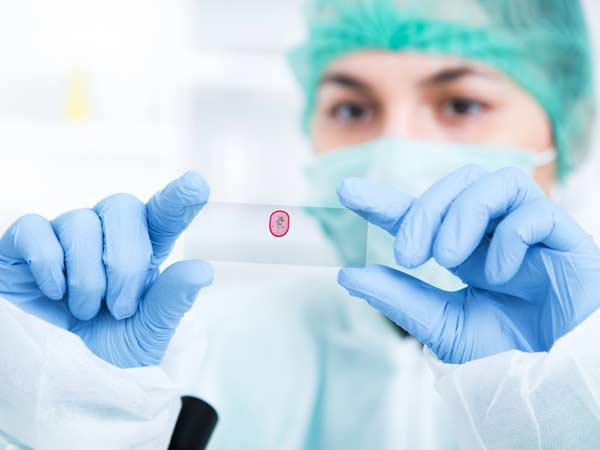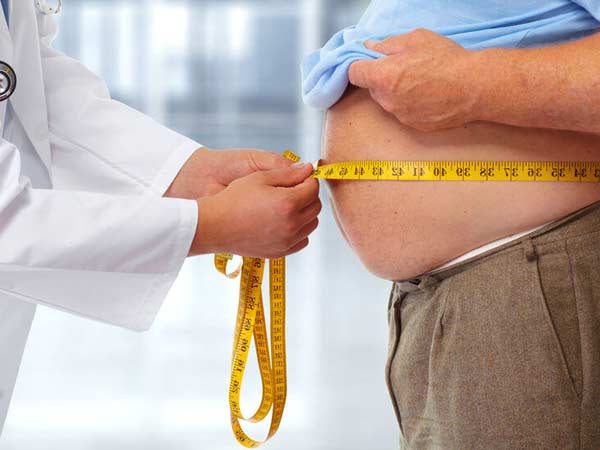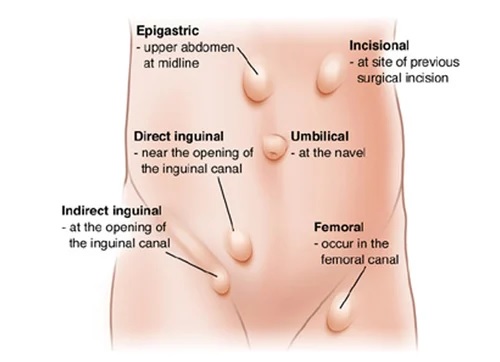
What is rectal surgery?
Rectal surgery is a surgical procedure in which all or part of the rectum is removed. The rectum is a long tube-shaped organ at the end of the digestive tract and is attached to the anus.
Rectal surgery often requires other procedures to reconnect the remaining parts of the digestive system and allow waste to pass out of the body.
Rectal surgery is used to treat and prevent diseases and disorders that affect the rectum, such as:
- Rectal cancer. Early-stage rectal cancer may require removal of only part of the rectum. More advanced cancer may require removal of the entire rectum and neighboring organs such as the urinary bladder, prostate, and uterus.
- Inflammatory bowel disease (Crohn’s disease or ulcerative colitis). If medications don’t help, removal of the affected part of the rectum may offer a resolution of your signs and symptoms.
- Uncontrollable bleeding. Heavy bleeding from the rectum may require surgery to remove the affected part of the rectum, although it can usually be controlled by colonoscopy or with the help of vascular radiology.
- Intestinal obstruction. A blocked rectum is an emergency that may require a rectal resection, depending on the situation. Usually an opening of the colon is made prior to the obstruction to the abdominal wall.
Previous considerations.
Before any surgery, an assessment should be carried out by the anesthetist where they will advise you which medication you should stop taking and which you should continue taking. Sometimes you must be evaluated by another specialist if you have underlying diseases.
In the case of anticoagulant treatment or treatment that facilitates bleeding, the anesthesiologist, haematologist, cardiologist or family doctor will inform about the attitude to follow.
Normally you must be evaluated by Hematology before the intervention since they must draw blood to study your blood group and make a reserve of blood bags for the day of the intervention. In this surgery, bleeding is an important complication, so we must offer you maximum safety. For your peace of mind, most of our patients do not require a blood transfusion.
In the case of smoking, the habit should be stopped because it facilitates anesthetic management, smoker patients have more complications than smokers in anesthetic procedures.
It is recommended to perform moderate-intensity exercise before any intervention, unless there is a specific contraindication, such as walking at least 60 minutes a day.
How is the preparation prior to the intervention?
FOOD AND MEDICINE
In preparation for a cholecystectomy, your surgeon may ask you to:
- Do not eat anything before surgery. You may have a sip of water with your medications, but avoid eating and drinking for at least six hours before surgery.
- Discontinue certain medications and supplements. Talk to your doctor about all medications and supplements you take. You continue to take most medications as directed by your doctor. Your doctor may ask you to stop certain medications and supplements because they can increase your risk of bleeding.
- Drink a solution to cleanse the intestine. Your doctor may prescribe a laxative solution to mix with water at home. Drink the solution over a period of several hours, as directed. The solution causes diarrhea to help you empty your colon. Your doctor may also recommend that you take enemas.
It is not always possible to prepare for a rectal resection. For example, if you need emergency rectal surgery for a bowel obstruction or perforation, you may not have time to prepare.
How is the surgery performed? (type of incision, resection, type of drainage, anesthesia)
BEFORE THE INTERVENTION
A resection of the rectum is performed under general anesthesia, so you will not be conscious during the procedure. Numbing medications are given intravenously into the arm. Once the medications take effect, the health care team will insert a tube down your throat to help you breathe, place a catheter to monitor your urine, put a tube into your stomach through your nose, and put IVs in your neck and wrist. to administer drugs and know your heart function.
DURING THE PROCEDURE
Depending on your situation, your surgeon will recommend one of two surgical approaches:
- Open rectal resection. In open surgery, a longer incision is made in the abdomen to access the rectum. The surgeon uses surgical tools to free the rectum from surrounding tissue and cuts out a part of the rectum or the entire rectum.
- Laparoscopic resection of the rectum. In laparoscopic resection, also called minimally invasive surgery, several small incisions are made in the abdomen. The surgeon inserts a tiny video camera through one incision and certain special surgical tools through the other incisions.
The surgeon watches a video screen in the operating room as tools are used to free the colon from surrounding tissue. The rectum is then removed through a small incision in the abdomen.
Laparoscopic surgery relieves pain and reduces recovery time after surgery. But not everyone is a candidate for this procedure. Also, in some situations, the operation may begin as a laparoscopic resection of the rectum, but circumstances may require the surgical team to convert it to open surgery.
Operations used to treat rectal cancer include the following:
- Remove very small cancers from inside the rectum. Very small rectal cancers may be removed using a colonoscope or other type of specialized endoscope inserted through the anus (transanal local excision). Surgical tools may be passed to remove the cancer and some of the healthy tissue around it.
This procedure may be an option if your cancer is small and unlikely to spread to nearby lymph nodes. If laboratory tests determine that the cancer cells are aggressive or more likely to spread to the lymph nodes, your surgeon may recommend additional surgery.
- Remove all or part of the rectum. Larger rectal cancers that are far enough from the anal canal may be removed in a procedure (low anterior resection) that removes all or part of the rectum. Nearby tissue and lymph nodes are also removed. This procedure preserves the anus so that waste can pass out of the body normally.
How the procedure is done depends on the location of the cancer. If the cancer affects the upper part of the rectum, that part of the rectum is removed and then the colon is connected to the rest of the rectum (colorectal anastomosis). The entire rectum may be removed if the cancer is located in the lower part. The colon, shaped like a bag, joins the anus (coloanal anastomosis).
- Remove the rectum and anus. For rectal cancers located near the anus, it may not be possible to completely remove the cancer without damaging the muscles that control bowel movements. In these situations, surgeons may recommend an operation called an abdominoperineal resection to remove the rectum, anus, and part of the colon, as well as nearby tissues and lymph nodes.
The surgeon creates an opening in the abdomen and joins the remaining colon (colostomy). Waste leaves your body through the opening and collects in a bag that attaches to your abdomen.
Sometimes it is necessary to place a tube or drain inside the abdomen with an outlet through the skin to allow the discharge of fluid from the area where the node was. This tube will be removed prior to discharge home.
What happens after the surgery?
After surgery, the patient slowly awakens from the effects of the anesthetic drugs, so they may have a feeling of not remembering the process. You will be for a short period of time in an area called post-anesthetic recovery or Intensive Care Unit for greater surveillance if your situation requires it. You will then be transferred to your room.
HOW IS THE RECOVERY IN THE HOSPITAL?
It is possible to feel nausea or abdominal pain after the intervention but they will be controlled with the prescribed medication. After about 24 hours, you will begin with the intake of liquids and then solid foods in the following days. We recommend sitting down and starting to walk about 24 hours after the intervention. The catheter that is inserted into your bladder will be removed in 1 or 2 days. At all times you will be supervised and helped by nursing staff.
If the surgeon has finally performed a stoma, you and your companion will receive the necessary information and training for its management.
If your surgery progresses on the ward without any incident, you will remain hospitalized for around 7 days.
HOW IS THE RECOVERY AT HOME?
Our premise is to be active in recovery. For this reason, we encourage the patient to walk daily, we recommend walking at least 60 minutes each day both inside and outside the house. Important physical efforts that may affect wound healing should always be avoided.
When you are discharged home, you will be prescribed medication to make you feel as comfortable as possible. You will resume your previous medication following the surgeon’s recommendations, since some drug may not be recommended in the first days after surgery. Normally the taking of painkillers is indicated to control the pain and the injection of heparin to avoid the appearance of thrombi in your legs.
In relation to food, we recommend a soft diet for the first week and avoid copious meals. Subsequently, all types of food will be progressively reintroduced, being fundamental those rich in fiber such as vegetables and fruit. You must be well hydrated so we recommend that you drink at least 1.5 liters of non-carbonated liquids. Occasionally diarrhea may appear that usually lasts a few days or a week in relation to the new situation of the digestive system.
You can wet your wounds when you wash yourself and then gently dry them with the application of any antiseptic (chlorhexidine, povidone-iodine, crystalmine…). These wounds should be evaluated by nursing around 7 and 10 days after surgery.
If you have had an opening from the intestine to your abdominal wall, we will facilitate contact with a specialized nurse (stomatherapist) in the management of the stoma who will help you and resolve all kinds of doubts.
Virtually full recovery can take approximately three to four weeks for laparoscopic colectomy. However, with open colectomy, once at home, full recovery can take four to six weeks. It will depend on your physical condition before surgery and the complexity of the operation.
What are the risks of rectal resection?
The normal thing is that your intervention proceeds without incidents but you must know the potential complications.
Infrequent and frequent risks: Infection or bleeding from the wound, acute urinary retention, phlebitis, increased number of bowel movements. Prolonged pain in the area of the operation. Laparoscopic surgery may cause gas extension to the subcutaneous tissue or other areas and referred pain, usually to the shoulder.
Infrequent and serious risks: Fistula of the anastomosis due to impaired healing that in most cases is resolved with medical treatment (medicines, serums, etc.), but that sometimes requires intervention with the creation of an artificial anus. Intra-abdominal bleeding or infection. Intestinal obstruction. Sexual dysfunctions that can lead to impotence. Altered continence to gases and even feces. Reproduction of the disease. Due to laparoscopic surgery, there may be vascular injuries, injuries to neighboring organs, gas embolism and pneumothorax.
These complications are usually resolved with medical treatment (medicines, serums, etc.), but they may require a reoperation, usually an emergency, and in exceptional cases death may occur.
Your risk of complications depends on your overall health and the reason you’re having a rectal resection.










